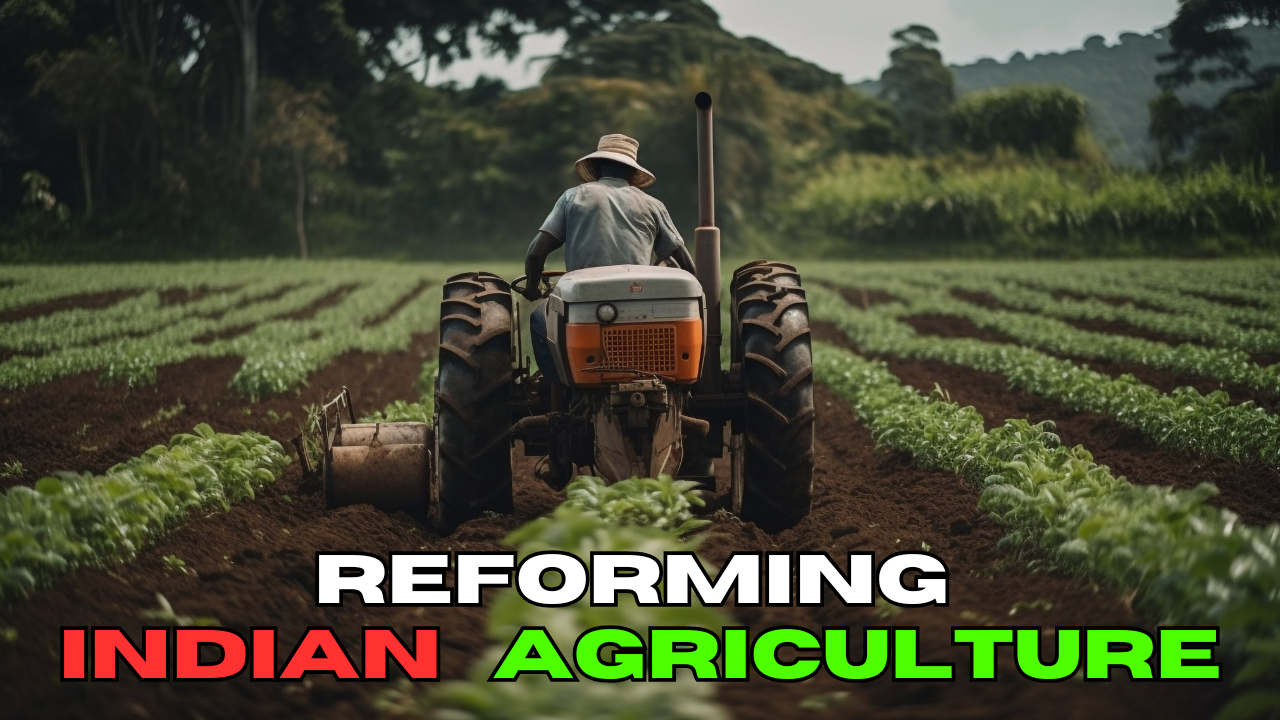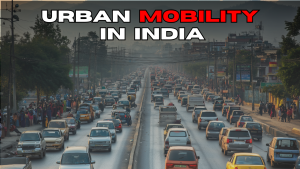Reforming Indian Agriculture: Balancing Growth, Equity, and Sustainability
Introduction – Indian Agriculture
India’s agriculture has come a long way since the food shortages of the 1960s, achieving self-sufficiency and becoming a global exporter. Yet, this success has come at a cost. The overdependence on policies like the Minimum Support Price (MSP), inefficient subsidies, and unsustainable farming practices have created economic and ecological challenges. As the nation aims for a developed India by 2047, reforming the agricultural system is essential. This essay explores the importance of market-oriented pricing, technology-driven solutions, and environmental stewardship, highlighting how these reforms can balance growth, equity, and sustainability for India’s farmers and consumers.
The Role of Pricing in Agriculture
Agriculture pricing is like the backbone of a farmer’s livelihood. Prices should reflect what people need (demand) and what farmers can provide (supply). However, in India, the government often sets prices to protect farmers and ensure affordable food. This system, while helpful in the past, now leads to problems.
The MSP system guarantees prices for crops like wheat and rice, encouraging farmers to grow these excessively. As a result, other vital crops like pulses are ignored, causing nutritional imbalances. Moreover, free electricity and heavily subsidised fertilisers push farmers to overuse resources like water, leading to soil damage and groundwater depletion. This creates an unhealthy cycle where farming harms the environment while taxpayers bear the burden of excessive subsidies.
To solve this, prices must be more flexible and based on the market. For example, if farmers have access to tools that forecast crop prices, they can make better decisions about what to grow. This would reduce waste, encourage diversity in crops, and balance production across the country.
The Green Revolution and the Need for New Technology
India’s Green Revolution of the 1960s transformed its farming landscape, introducing high-yield crops and modern techniques to combat food shortages. While this was a game-changer for wheat and rice production, it largely ignored other crops and regions, leaving behind areas that needed attention the most.
Today, technology offers new solutions. Modern tools like drip irrigation save water, while data from satellites can predict rainfall and guide planting decisions. For example, imagine if a farmer knows in advance that a dry season is coming—they could switch to drought-resistant crops, protecting their income and conserving water.
The challenge lies in making these technologies affordable and accessible, especially for small farmers who lack resources. The government can play a big role by funding research and training programmes, ensuring every farmer benefits from technological advancements.
From Freebies to Fair Support
Free food, electricity, and fertilisers might seem like good ideas, but they often do more harm than good. For example, free fertilisers encourage overuse, which depletes the soil’s natural nutrients. Similarly, free electricity for water pumps leads to excessive groundwater extraction, leaving regions like Punjab and Haryana with dangerously low water levels.
A better way to help is through direct cash transfers. Instead of giving free fertilisers, the government can give farmers money to buy what they need. Poor families can receive financial support to buy food rather than depending on government rations. This approach puts the decision-making power in the hands of the people, making the system fairer and more efficient.
Countries like Brazil have successfully used direct transfers to support farmers and reduce waste. If implemented well in India, this system could ensure that help reaches those who need it most without damaging the environment or the economy.
Protecting the Environment
Agriculture in India is often at odds with nature. Overproduction of rice and wheat, encouraged by subsidies, is depleting groundwater and damaging the soil. Additionally, practices like burning crop residues contribute to air pollution, harming both people and the planet.
To address these issues, India must promote sustainable farming. For example, farmers can be encouraged to grow millets, which need less water and are more resilient to climate change. Organic farming methods can also help maintain soil health while reducing harmful chemical use.
Learning from other countries can provide valuable insights. Israel, for instance, uses advanced irrigation systems that save water and increase yields. Adopting similar techniques can help India strike a balance between productivity and conservation.
Ensuring Fairness for Farmers
Not all farmers are equal. Big landowners benefit more from subsidies and MSPs, while small farmers and landless workers struggle to make ends meet. Women, who form a large part of the agricultural workforce, often face even greater challenges, including lower pay and lack of land ownership.
To make agriculture inclusive, policies must focus on small and marginal farmers. Providing them with better tools, training, and access to credit can empower them to improve their yields and incomes. Women farmers, too, need support through land rights and equal opportunities.
Additionally, India must encourage crop diversification. Growing a mix of crops ensures better nutrition for families and provides farmers with multiple income sources, reducing their risks.
Building the Future: Investments and Infrastructure
For India to meet its agricultural goals, it needs strong foundations. Investments in research can lead to better seeds and farming techniques. Building rural roads and storage facilities can reduce food waste and connect farmers to markets more efficiently.
Digital tools also have a big role to play. Mobile apps can provide farmers with real-time weather updates, market prices, and farming tips. Such innovations can bridge the gap between rural and urban areas, ensuring farmers have the knowledge and resources to succeed.
A Vision for 2047
As India approaches its 100th year of independence, its agricultural policies must reflect a forward-thinking approach. The focus should shift from short-term fixes like subsidies to long-term solutions that combine technology, sustainability, and fairness.
By freeing up prices and promoting market-driven systems, farmers can have more control over their produce and profits. By investing in education and infrastructure, rural areas can become hubs of innovation. And by protecting the environment, India can ensure its natural resources are preserved for future generations.
Conclusion
India’s agricultural journey mirrors its larger challenges of balancing growth, equity, and sustainability. The MSP system and subsidies, once crucial for survival, now need to be reimagined. Reforms that promote market-based pricing, technological innovation, and environmentally friendly practices can transform the sector, making it fairer and more efficient.
These changes will not be easy, but they are necessary. With the right policies and investments, India can build an agricultural system that feeds its people, supports its farmers, and respects its environment—a truly “developed” India by 2047.
Subscribe to our Youtube Channel for more Valuable Content – TheStudyias
Download the App to Subscribe to our Courses – Thestudyias
The Source’s Authority and Ownership of the Article is Claimed By THE STUDY IAS BY MANIKANT SINGH




